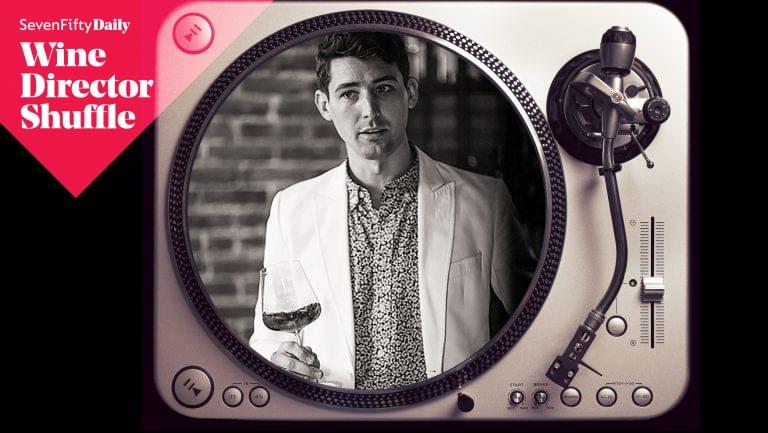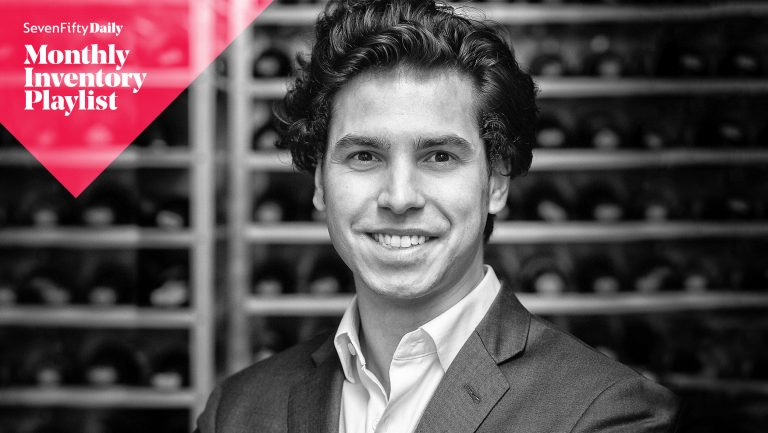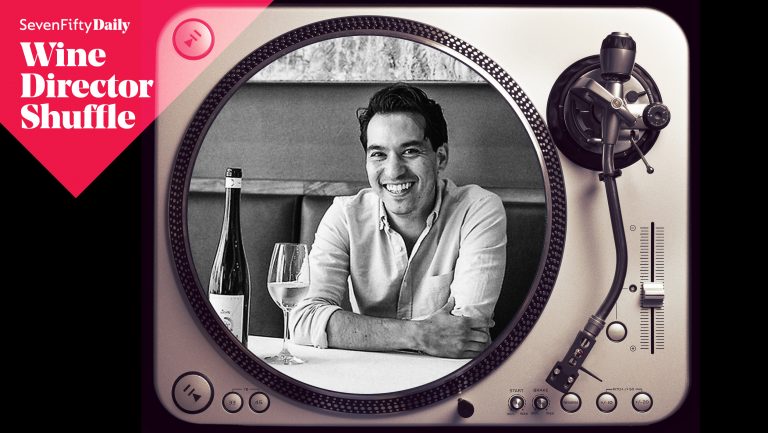Industry stalwarts have heard it often enough they could write a song on the subject: an inquisitive imbiber searching for the perfect description of what he’s tasting, ultimately falling on a music-oriented simile like “as complex as jazz,” or “loud and raucous like the Ramones.”
Eye-rolling aside, it’s a common analogy for a reason—music is a universal language and wine is often hard to pin down, especially without the proper training or hours logged. Caleb Ganzer, wine director and managing partner at Compagnie des Vins Surnaturels, not only understands the tendency, but wholly embraces it. When contemplating a change to the wine list at his jaunty wine bar on the edge of New York City’s Nolita neighborhood, Ganzer thinks in terms of playlists.
“If I had to describe our program with one artist, it would have to be Fela Kuti,” Ganzer says. “While we may talk about and work with serious ‘subject matter,’ we present it all in a fun, light-hearted manner that feels like a party.”

Don’t miss the latest drinks industry news and insights. Sign up for our award-winning newsletters and get insider intel, resources, and trends delivered to your inbox every week.
Perhaps not surprisingly, tracks like Harry Belafonte’s calypso-driven “Jump in the Line” regularly pour out of Compagnie’s speakers. The feel-good sounds establish a warm environment that’s conducive to trying a glass of Hervé Souhaut’s 2016 La Souteronne Gamay from the Rhône or splurging on a bottle of 2008 Casa Ferreirinha Barca Velha from the Douro.
“There should be wines they know and love [that can] help establish rapport between guests and wine director,” Ganzer says. “And once you have that level of trust, you can introduce some new, fun wines—or tracks—that they might not originally have been so keen on trying.”
Although French-leaning, the extensive wine program at Compagnie spans five continents. It’s the byproduct of Compagnie’s unofficial mantra, to be the neighborhood wine bar for the world. Roughly 800 selections are drawn from about 6,000 bottles stored in-house. Over thirty wines are available by the glass, including a mystery white and red, which, if identified correctly, are on the house.
“For every classic region we highlight, we try to promote a less-known region,” Ganzer says. “Such as Calce in Roussillon, Basket Range in South Australia, Swartland in South Africa, or Burgenland in Austria.”
The wine that sings to him most at the moment is Jauma’s 2016 A Thousand Fires Sémillon, made from old-vine, organically farmed fruit in Australia’s McLaren Vale. “It is one of the most delicious beverages from one of the least likely places,” Ganzer says. “I love that about the wine world. You never cease to be surprised if you are constantly seeking.”
Ganzer’s interest in wine developed during college, while studying international studies and French abroad. Initial intrigue in the field of diplomacy evolved into a love affair with fermented fruit, thanks to working shifts at bottle shops and restaurants while in Italy. As soon as he realized that being a sommelier was even an option, let alone a viable career, Ganzer set his sights.
After a stretch as a somm at New York City’s acclaimed Eleven Madison Park, Ganzer headed to lower Manhattan to open Compagnie in 2014. In between gigs, he has made an effort to travel to and explore lesser-known wine regions like France’s Roussillon. “To this day, after having tasted so many great wines from that region and building relationships, I prominently feature the best winemakers of this area on my lists.”
Ganzer has tried a number of different wine management software options to track and manage his inventory, but he says he keeps returning to Excel and a good old-fashioned bin system. His personal approach to the floor—a combination of awareness, engagement, and keeping detailed tabs on every individual in the building—extends to the “unglamorous but temperature-controlled” room, as he describes it, where he does the inventory. “I like to feel, see, and know where all the bottles are,” Ganzer explains. “It helps keep the wines fresh in [my] brain when selling throughout the month.”
Prior to his term at Eleven Madison Park, while working at Daniel Boulud’s DB Bistro Moderne, Ganzer and a coworker devised a crafty hack to tighten up bottle counts. “I’m not quite sure how to describe it except maybe the Google [equivalent] for missing wines,” he says. On top of the four-digit codes assigned to wines via BinWise software, Ganzer assigned codes and locations for the organizational bins themselves, combating a large storage space’s unique ability to make some wines disappear. The added layer of mapping cut into losses and made finding specific bottles much easier.
Even amid the monotony of tallying wines, music has its place. The tracks Ganzer listens to while at home and on the job are much the same, offering a delightfully blurred perspective between work and play. “I truly feel like I am always working yet never working,” he says.
Ganzer’s philosophy is simple and tough to argue with—if people are enjoying the music, then they’re having a good time. And if they’re having a good time, they’re comfortable, receptive, and maybe even willing to shell out $675 for a bottle of Jacques Selosse Substance Grand Cru Blanc de Blancs.

Dispatch
Sign up for our award-winning newsletter
Don’t miss the latest drinks industry news and insights—delivered to your inbox every week.
Mark Stock is a writer from Portland, Oregon, who is now based there. He spent a decade making, selling, and cleaning up wine in the Willamette Valley in between penning stories for a host of regional and national outlets. He adores Iceland, brown trout, aquavit, and grunge rock.






